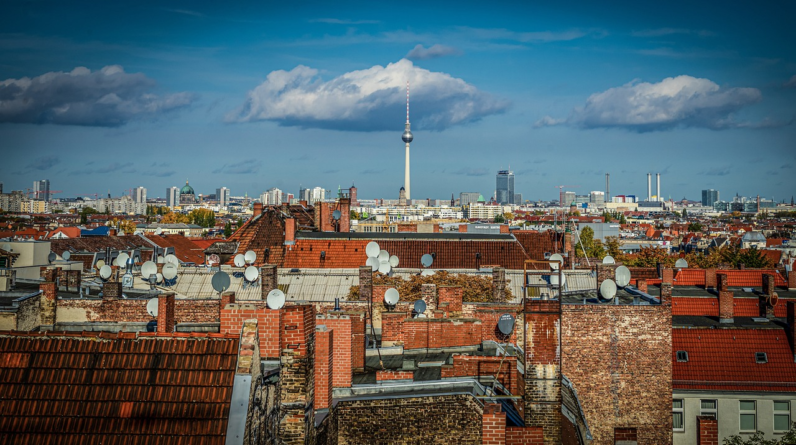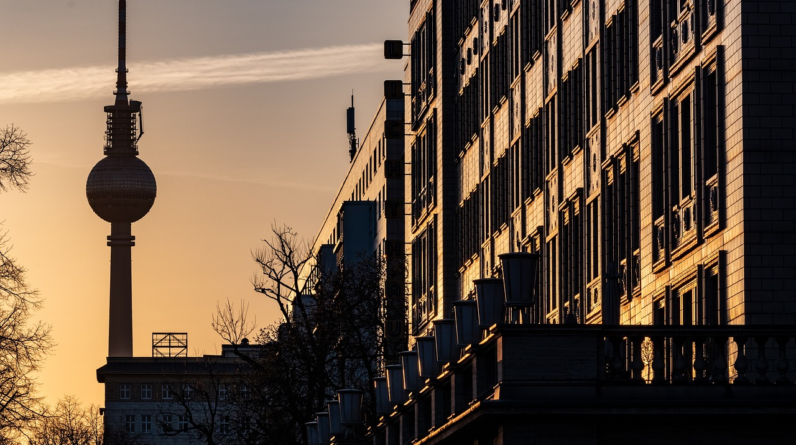
Berlin is a city that has been shaped by its history, and there are few places in the world where you can experience such a rich tapestry of historical landmarks.
From the iconic Berlin Wall to the stunning Charlottenburg Palace, there are countless sites that tell the story of this remarkable city.
One of the most famous landmarks in Berlin is undoubtedly the Berlin Wall. This imposing structure once divided the city into East and West, standing as a physical manifestation of the Cold War for almost three decades. Today, it remains an important symbol of Germany’s reunification and serves as a poignant reminder of the country’s turbulent past.
But while the Wall may be one of Berlin’s most famous landmarks, it is far from being its only historical treasure.
From grand palaces to iconic monuments, there is no shortage of fascinating sites to explore in this incredible city.
The Berlin Wall
You can’t truly understand the complex history of this city without exploring the scars left by the infamous Berlin Wall. This concrete barrier was a symbol of division and oppression for nearly three decades, separating families and friends, and restricting freedom of movement.
The fall of the Berlin Wall in 1989 marked a momentous occasion in world history, representing the end of the Cold War and paving the way for German reunification.
The impact of the Berlin Wall on modern Germany cannot be overstated. Its legacy is still felt today, with remnants of the wall serving as a reminder to future generations about the importance of unity and freedom.
Visitors to Berlin can explore various sites related to the wall’s history, including Checkpoint Charlie Museum, East Side Gallery, and Brandenburg Gate. Each location provides unique insights into life during this tumultuous time in German history.
Brandenburg Gate
The iconic Brandenburg Gate stands tall as a symbol of unity and peace in the heart of the city. This historical landmark has deep roots in Berlin’s history and significance. It was built during the 18th century as a sign of Prussian power. The gate was designed by architect Carl Gotthard Langhans and took three years to construct from 1788 to 1791.
The architectural design and construction of the Brandenburg Gate are truly remarkable. It is made up of twelve Doric columns, five passageways, and topped with a chariot pulled by four horses. This monument is a true testament to Prussian engineering prowess. Despite being damaged during World War II, it was restored to its former glory in 2002.
Today, the Brandenburg Gate serves as one of Germany’s most popular tourist attractions and continues to be an important symbol for the country’s reunification following the fall of the Berlin Wall.
Checkpoint Charlie
Standing as a reminder of the Cold War era, Checkpoint Charlie continues to be an important site for understanding Berlin’s divided past. The checkpoint was one of the most famous crossing points between East and West Germany during the Cold War. It was also where many daring escape attempts were made, adding to its historical significance.
However, there have been controversies surrounding the preservation of Checkpoint Charlie. Some argue that it has become too commercialized and that the replica guardhouses and souvenir shops take away from its authenticity. Nonetheless, it remains a popular tourist attraction and contributes greatly to Berlin’s economy through tourism revenue.
Despite these debates, Checkpoint Charlie serves as a powerful symbol for those seeking to understand the political tensions that once divided Germany and shaped its history.
Reichstag Building
You’ll be amazed by the stunning architecture and rich history of the Reichstag Building. This iconic landmark, located in the heart of Berlin, has served as a symbol of democracy for over 100 years. The building’s design is nothing short of spectacular, featuring an impressive glass dome that offers breathtaking views of the city.
The Reichstag Building has seen its fair share of renovation history, with the most significant being after it was damaged during World War II. However, since then, it has been restored to its former glory and now houses Germany’s parliament.
Visitors can take guided tours to learn about the building’s past and present significance while also having a chance to witness parliamentary sessions firsthand. A visit to this magnificent structure is an unforgettable experience that should not be missed when exploring Berlin’s top landmarks.
Charlottenburg Palace
Get ready to be transported back in time as we explore Charlottenburg Palace, a magnificent royal residence that will take your breath away.
Built during the 17th century, this baroque palace is one of Berlin’s top historical landmarks.
The palace architecture is stunning and reflects the opulence and grandeur of Prussian royalty.
As you step inside, you’re immediately awed by the intricate details of the interior design.
From the lavish ballroom to the ornate porcelain chamber, every room is adorned with exquisite sculptures, paintings, and furniture.
You can’t help but feel like royalty yourself as you wander through the halls imagining what life must have been like for Prussian kings and queens who once called this palace home.
Don’t forget to visit the gardens outside, which are just as impressive with their fountains and statues scattered throughout.
Overall, Charlottenburg Palace is a must-visit destination for anyone interested in royal family history or simply appreciates breathtaking architecture.
Frequently Asked Questions
What is the history behind the name ‘Checkpoint Charlie’?
Checkpoint Charlie holds immense historical significance in Berlin. It was one of the busiest border crossings during the Cold War, and served as a symbol of the divided city.
The name ‘Checkpoint Charlie’ evolved from its initial designation as Checkpoint C, and was later named after the letter ‘Charlie’ which is used in NATO’s phonetic alphabet.
The checkpoint saw numerous attempts to cross over by East Germans seeking freedom in the West, resulting in tense standoffs between Soviet and American tanks.
With the fall of the Berlin Wall in 1989, Checkpoint Charlie lost its purpose and was eventually dismantled. However, today it stands as a powerful reminder of a tumultuous time in history and continues to attract visitors from all over the world who come to learn about its legacy and significance amidst the construction, demolition, and legacy of the Berlin Wall.
Was the Reichstag Building always used as a parliamentary building?
If you’re interested in the Reichstag Building’s history, you might be surprised to learn that it wasn’t always used as a parliamentary building. Originally completed in 1894, the building was designed by architect Paul Wallot. It served as the home of Germany’s parliament until it was severely damaged in a fire in 1933. Following renovations, which included an updated design by British architect Norman Foster, the Reichstag Building reopened in 1999 as the seat of Germany’s federal government.
Today, visitors can tour the impressive structure and take in its stunning architecture and design while learning about its rich history.
Are there any other portions of the Berlin Wall still standing besides the East Side Gallery?
If you’re interested in the Berlin Wall remnants, there are a few hidden landmarks that you might want to explore. While the East Side Gallery is certainly the most famous section of the wall still standing, there are other portions scattered throughout the city.
For example, near Potsdamer Platz, you can find a small stretch of wall that has been preserved as part of a memorial park. There are also sections of the wall remaining in neighborhoods like Mitte and Wedding, although they may not be as well-known or easy to find.
So if you want to delve deeper into Berlin’s history and see some lesser-known landmarks related to the Wall, be sure to keep your eyes peeled as you explore the city.
What was the significance of Charlottenburg Palace during World War II?
Charlottenburg Palace, a royal residence in Berlin, played a significant role during World War II. Its architectural design was heavily damaged during the war and had to be restored in the post-war period.
The palace was used as a hospital and storage facility for art during the war. In 1943, it was heavily bombed by Allied forces which resulted in extensive damage to its interior and exterior.
However, despite these damages, Charlottenburg Palace remains an important historical landmark today due to its grandeur and significance in German history.
Did the Brandenburg Gate undergo any major renovations or restorations in recent years?
If you’re curious about the Brandenburg Gate in Berlin, you’ll be pleased to know that it has undergone some major renovations and maintenance procedures in recent years.
In 2016, a comprehensive restoration project began on the iconic landmark, which involved cleaning and repairing the sandstone blocks that make up the gate. The renovation updates also included modernizing the lighting system and making improvements to accessibility for visitors with disabilities.
Despite being an enduring symbol of Berlin’s history, the Brandenburg Gate is not immune to wear and tear over time. Fortunately, ongoing maintenance procedures will help ensure that this remarkable monument remains in good condition for generations to come.
Conclusion
So, there you have it! You’ve explored some of the top historical landmarks in Berlin.
From the iconic Berlin Wall to the grandeur of Charlottenburg Palace, each of these sites has played a significant role in shaping Germany’s history and culture.
As you reflect on your journey through these landmarks, take a moment to appreciate how they speak to the resilience and determination of the German people. Despite decades of war and division, Berlin has emerged as a thriving hub of art, culture, and innovation.
So go ahead and mark these spots on your travel itinerary – they’re not to be missed!






